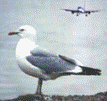Bird Strike Committee Proceedings

Bird Strike Committee-USA/Canada Joint Annual Meeting: 8th (2006)
Date of this Version
August 2006
Document Type
Article
Abstract
The FAA (William J. Hughes Technical Center), U.S. Air Force, and the Smithsonian Institution signed a five year Interagency Agreement in 2003 to develop a multi-level DNA-based identification method for bird strike remains. The tasks to be achieved include: establishment of a database of mitochondrial DNA sequences (12s, 16s, CytB and COI) for 300 species of birds; testing and refining DNA-based techniques for forensic samples; and development of user-friendly methods of collecting ‘snarge’. A separate collaboration between the Smithsonian and the University of Guelph (Canada) began in 2004 to sequence one of these target genes (COI, ‘barcode’) for all birds of the United States and Canada. This effort is now 93% complete and sequences are available for some 642 species of birds (462 provided by this project). In 2005, 83 bird strike cases (FAA, USAF) were submitted to the DNA lab for identification testing. A variety of material was tested for contamination, sample quantity and quality. The DNA method provided more specific identifications than morphological analyses alone in 66% of these cases. Twenty-one cases lacked viable DNA, but 5 of the non-viable cases contained sufficient feather material for microscopic identifications. Preliminary results show that molecular identifications are not reliable in some species of waterfowl and gulls (species known to hybridize widely) because of significant overlap in mtDNA sequences. Because of limitations in both methods, we recommend using a combination of molecular and morphological techniques for the best bird strike identification system. Testing continues on the use of a ‘DNA’ card to fix the samples in the field and a rigorous testing protocol is planned for DNA bird strike identifications during the 2006 Fall migration.

